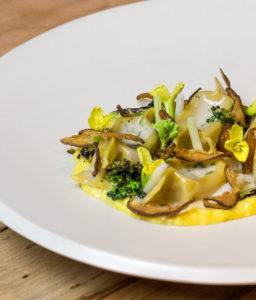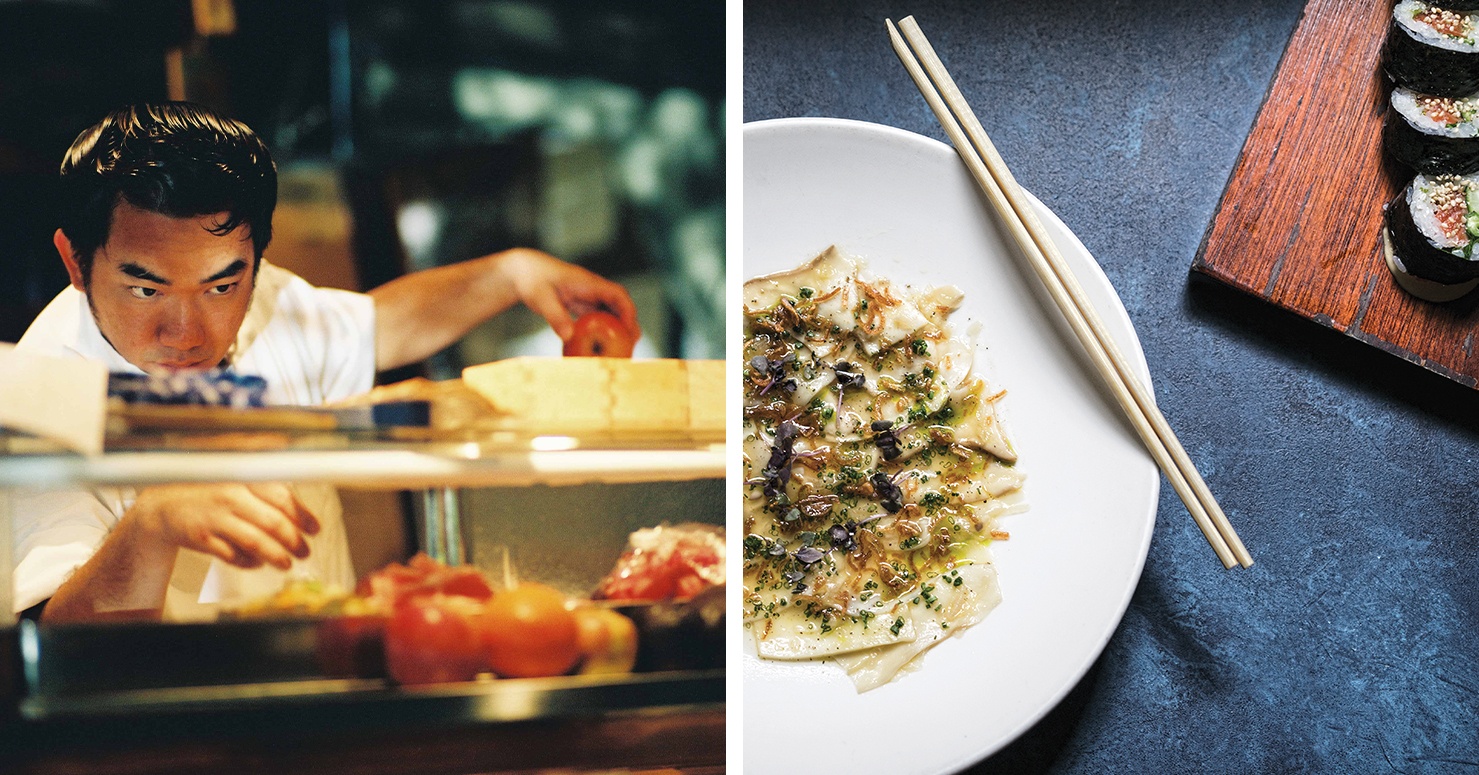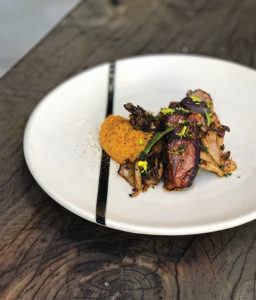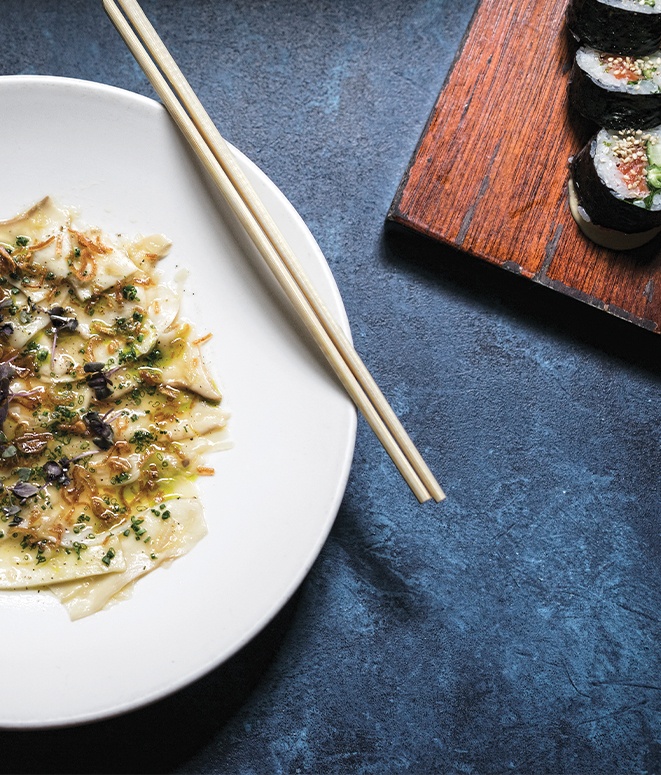BY Craig Viera
Austin is complicated. Long considered “the blueberry in the tomato soup,” the city represents a cultural otherness compared to the rest of its state—from the counterculture movements that flared up throughout the ’70s to the “Keep Austin Weird” rallying cry that pervades the city today. So while geographically Austin is in Texas, it comes as little surprise that foodie havens across the city feature the manicured beards, neon hair, and reclaimed wood decor that seem more quintessentially Portland or Brooklyn than Dallas or Houston.
But despite a spate of trendy flourishes, Austin’s culinary community never feels cold or pretentious. Instead, it embraces an unironic passion for food and a sincere commitment to the city. (Case in point: At many locations, locally sourced isn’t a selling point—it’s a mandate.) It’s a duality that both pays off the city’s unofficial slogan about keeping Austin weird and gives a distinct identity to the city’s booming restaurant scene, where chefs are using sous vide and other techniques to transform classic dishes into modern marvels.
Take Jack Allen’s Kitchen, where owner and chef Jack Gilmore has been a staple in the local food community for more than 30 years. At any of the four Jack Allen’s locations, you’ll find feel good comfort dishes, like chicken-fried beef rib served on plus-sized plates.

“Fall-off-the-bone” might sound like a cliché, but in this dish, it’s the truth. Enough meat literally falls off the rib bone during the finishing process that the kitchen developed a second menu item to highlight it, adding the tender meat shreds to its pimento-slathered beef rib quesadilla.
The dish is brazenly Texan in spirit—yet the kitchen’s methods reveal wider inspiration. Prior to being chicken-fried, the ribs are cut from the rack in pairs and cooked sous vide for 12 hours at 176°F (80°C). Though not a conventionally Texan technique, cooking the ribs sous vide allows the meat to tenderize in its own fat, giving it the juiciness and full flavor you would expect from Southern fare.
Touches like this can be attributed to Jack’s son, chef Bryce Gilmore, who helped evolve his father’s staples before leaving Jack Allen’s Kitchen to launch his own restaurant, Barley Swine.
Just down the road from Jack Allen’s Anderson location, the culinaires at Barley Swine are more interested in supporting local farmers than preparing classically Texan cuisine. Here, Gilmore, a six-time James Beard Award finalist, offers a striking selection of small plates and a tasting menu inspired by farmer friends. Although much of the menu rotates seasonally, favorites like bite-sized shiitake dumplings served atop soft, sous vide scrambled eggs have remained on the menu for years.

Bryce’s recipes are more adventurous than his father’s classic Southern comforts, though the family shares an unwavering dedication to local partnerships. For the past two years, in an effort to help farmers and ranchers during the slow winter months, Bryce Gilmore has fronted the booth fees for all vendors at the Sustainable Food Center’s farmers markets. It’s a quiet act of generosity that underscores his deep connection to the Lone Star State.
Of course, drawing from tradition isn’t strictly limited to honoring Texan roots. Just south of Downtown, chef Tyson Cole’s Uchi offers quintessential Japanese fare, including cold dishes like the Kinoko Usuzukuri—thinly sliced mushrooms cooked sous-vide and served in a white ponzu—and warm bites like the popular Gyutoro (short rib) maki.
By design, Uchi offers a formal take on Japanese cuisine, but the restaurant is not afraid to carefully introduce a few modern twists. To speed up the fermentation process for their house-made miso, Uchi incubates its miso at 91 degrees Fahrenheit by cooking sous vide and covering the bath with a towel to keep light from interfering with the fermentation process. The low, consistent heat allows the koji to activate quickly without sacrificing flavor or integrity. Using this technique, Uchi’s miso is ready in just 11 days, rather than the nine months it takes to ferment using conventional methods.

For a less formal take on Japanese cuisine, head across town to Uchi’s sister restaurant Uchiko. Here, even the decor playfully subverts expectations—behind the sushi bar, you’ll find Star Wars toys and figurines nestled among Asian ceramics, baskets, and ornaments. The menu takes a similarly offbeat approach, serving traditional Japanese ingredients and flavors with a knowing wink. If you’re hungry for sous vide katsu pork belly makimono served with egg yolk custard, you’ll want to order the “Ham & Eggs.”

Despite the range of influences coming together to shape Austin’s food scene, a shared sense of purpose permeates each restaurant—the notion that upscale dining doesn’t need to feel inaccessible. A meticulous focus on food, both in celebrating where it came from and discovering how it can be perfected using modern techniques, leaves little room for ego or judgment. Instead, chefs can home in on passion and deliver an experience that brings joy to first-time and repeat diners alike. Or maybe it can be chalked up to that famous Southern hospitality.
Related Articles VIEW ALL ARTICLES
Dining
Cheers to Summer
Colorful cocktails made sous vide style are playing a starring role on bar menus across the country.
Read More >Dining
Memorial Day Menu Guide
Make the most of your Memorial Day—whether you're cooking for a crowd or keeping it low-key with a small group—by using sous vide to help with meal prep.
Read More >Dining
Summer Grilling 101
Cooking al fresco gets even tastier when you start with sous vide.
Read More >Buy the Magazine
Buy NowDedicated to the Art & Science of Sous-Vide
The first publication devoted to the art and science of sous vide cooking, featuring innovative recipes, visual inspiration, expert techniques for cooking sous vide at home, and exclusive interviews with world-class chefs.

